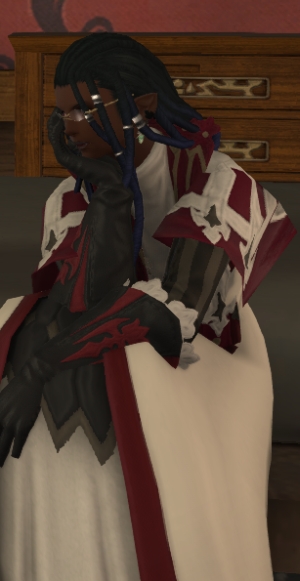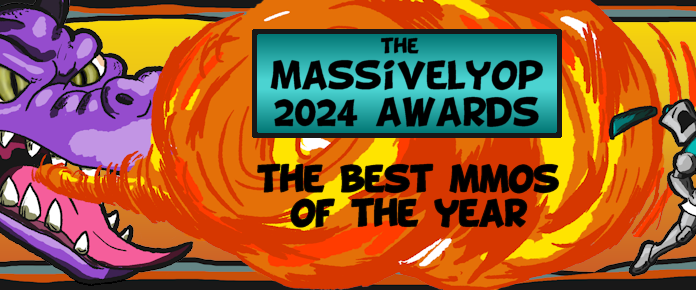
But the dungeon still gets cleared successfully. Why? Because of the healer.
Healers in Final Fantasy XIV are fairly involved as roles go, given far more tasks than simply desperately clicking on party members while making health bars go back up. Oh, sure, that’s a big portion of what they do, but there’s respectable damage and support to go along with it. So now that we’ve covered the other roles, it’s high time to give the healers their due.
White Mage
 In the earliest days of Final Fantasy XIV, the healers were all… well, they were all Thaumaturges, or more often you would just toss Cure and Sacrifice on a Lancer and then go to town because the earliest versions of the game were a mess. In the earliest days of having jobs, though, White Mages were the undisputed masters of healers because they were the only dedicated healers, and thus your options were pretty starkly limited. The introduction of Scholar meant that there was a need for a change.
In the earliest days of Final Fantasy XIV, the healers were all… well, they were all Thaumaturges, or more often you would just toss Cure and Sacrifice on a Lancer and then go to town because the earliest versions of the game were a mess. In the earliest days of having jobs, though, White Mages were the undisputed masters of healers because they were the only dedicated healers, and thus your options were pretty starkly limited. The introduction of Scholar meant that there was a need for a change.
As it stands now, White Mages are basically the masters of straightforward big heals. There’s not a great deal of subtlety or micromanagement involved with White Mage; you heal, and health goes back up. That’s not to imply that the job is simple, though, just straightforward. You’ve got access to an array of heal-over-time effects, and the job has a strong heal-over-time component along with several dedicated healing tools. It’s also arguably the most straightforward job to do damage with during down cycles: You can toss out Medica II, switch on Cleric Stance, and fire off damage spells until someone’s HP starts to dip uncomfortably low.
That’s without getting into the sheer power of Stoneskin II, Medica II, and Holy spam against trash packs.
Niftiest Ability: Assize. It’s a bit of an odd duck in its functionality, but it manages to simultaneously fill a lot of holes in a White Mage’s overarching arsenal without being overbearing. Frankly, it’s closer to what I would imagine Holy was originally meant to be, but it’s a nice little button for several varieties of panic.
Lamest Ability: Repose. Unlike the vast majority of jobs, White Mages don’t really have a single ability that stands out as being completely useless aside from corner casts. Repose, however, is a trick that’s a close cousin to Sleep, which is already a spell almost no one ever uses. Considering that two-thirds of the game’s tanking classes maintain threat via dealing AoE damage, it’s kind of useless crowd control anyhow, and when you combine that with the fact that Repose just targets one thing at a time… yeah. Not useless, even more useful than several other lame abilities, but just meh.
Biggest Weakness: Scholars dealing damage have a security net with the fairy. Astrologians frequently will be just buffing teammates. But White Mages have to commit a bit more thoroughly to either being in Cleric Stance or not. The job also lacks some of the utility for mitigation and offense of the other two healers.
Scholar
 Scholar and Summoner were the two major additions to the game when 2.0 launched, and boy, has Scholar ever earned its keep. Despite my usual antipathy toward pet management, I’ve generally preferred playing as one in the instances wherein I feel the urge to heal because Scholar is much more about lots of little heals spread across several casts and uses.
Scholar and Summoner were the two major additions to the game when 2.0 launched, and boy, has Scholar ever earned its keep. Despite my usual antipathy toward pet management, I’ve generally preferred playing as one in the instances wherein I feel the urge to heal because Scholar is much more about lots of little heals spread across several casts and uses.
The improvements and expansions added to the job with Heavensward haven’t papered over the central weaknesses of the job, but they have given players a lot of additional tools to deal with those weaknesses and scenarios. The result is that complex challenges are still challenging and force you to be quick on your feet (well, fingers, you know), but you almost always have tools available. It’s just a matter of using the right ones at the right times.
Niftiest Ability: Emergency Tactics. Scholars have a couple of spells to erect temporary barriers, but Emergency Tactics adds a layer of much-needed tactical consideration to the spells. It’s also on a short cooldown, so you don’t feel as if using it at the wrong time will leave you in a lurch when you need it the most. As with the job as a whole, you have more options and more decisions to make, a power adjustment rather than a straight boost.
Lamest Ability: Dissipation. This is supposed to be a panic button, and it is. It’s just that it’s a panic button that kind of limits you when you use it and immediately afterward as well; you have to plan not only for the sudden burn of your Aetherflow stacks, but for the fact that you’ll need to bring your fairy up quickly afterward. It’s not a bad panic button, but it’s kind of a degree of panic you rarely hit.
Biggest Weakness: Scholar inherits some of the weaknesses of Arcanist insofar as it’s a job much more based around damage-over-time than hard bursts of damage. Similarly, it’s a healer of a thousand casts; you don’t have a big show-stopping heal other than Lustrate, and that relies upon careful management of your all-important Aetherflow. The fairy, as a result, can sometimes be a liability in fights wherein she’s likely to get cooked despite your micromanagement.
Astrologian
 Apparently we can’t just get a straight-up Time Mage these days. Astrologians have been lurking in the background of the game for quite some time; they’re all over the place in Ishgard, after all. Playing one, though, was a very new experience, a healing job that emphasizes a sort of managed approach absent from the other two healers. Rather than focusing on big heals followed by damage-dealing downtime, Astrologian is about more frequent heals and lots of party buffs.
Apparently we can’t just get a straight-up Time Mage these days. Astrologians have been lurking in the background of the game for quite some time; they’re all over the place in Ishgard, after all. Playing one, though, was a very new experience, a healing job that emphasizes a sort of managed approach absent from the other two healers. Rather than focusing on big heals followed by damage-dealing downtime, Astrologian is about more frequent heals and lots of party buffs.
That’s not to say that Astrologians have no offensive options, just that much more of the job is focused around keeping up a stream of heals and buffs instead of planning on damage spells. The net result is similar because Astrologians add to the damage of the rest of the party, but it means taking a much more reserved approach to concept. It’s a solid option for players who generally prefer to just hang back and heal rather than weaving in the occasional Stone or Ruin spell.
Niftiest Ability: Synastry. I’ll be honest and say I’ve always found abilities that focus heavily around creating a healing bond between party members to be pretty cool; the fact that Synastry is unique in that regard makes me like it that much more. It’s a good way to handle picking up damage spikes on single targets while also keeping the tank healed through steady damage, to boot.
Lamest Ability: Spread. While it’s a useful ability, it’s kind of a clumsy workaround for the way that cards normally work, and it’s the closest the job comes to having an altogether superfluous ability. Useful for corner cases where you really need one specific random effect but not right now, but you’d rather keep it around than risk not getting it later, even though the recast isn’t egregious.
Biggest Weakness: The problem with any job based around buffing teammates is that your performance becomes more heavily linked to your teammates. So a good team gets that much better, but that team from the beginning can’t make effective use of the buffs you’re handing out in the first place. There’s some complexity to the job, sure, but your biggest weakness is relying on the team to do well.
As always, feedback is welcome in the comments below or via mail to eliot@massivelop.com. Next time around, I want to talk a little bit about 1.0, datamining, and how much speculative stuff from 1.0 might be useful in determining the future of the game.
 The Nymian civilization hosted an immense amount of knowledge and learning, but so much of it has been lost to the people of Eorzea. That doesn’t stop Eliot Lefebvre from scrutinizing Final Fantasy XIV each week in Wisdom of Nym, hosting guides, discussion, and opinions without so much as a trace of rancor.
The Nymian civilization hosted an immense amount of knowledge and learning, but so much of it has been lost to the people of Eorzea. That doesn’t stop Eliot Lefebvre from scrutinizing Final Fantasy XIV each week in Wisdom of Nym, hosting guides, discussion, and opinions without so much as a trace of rancor.












